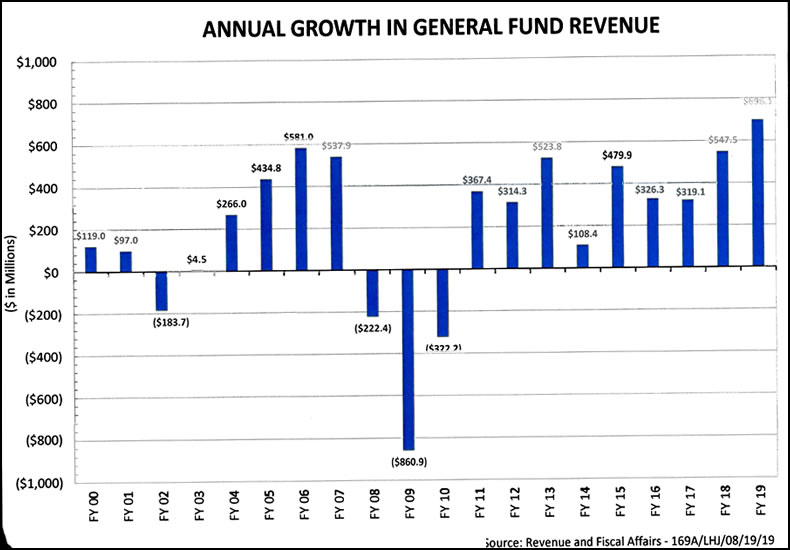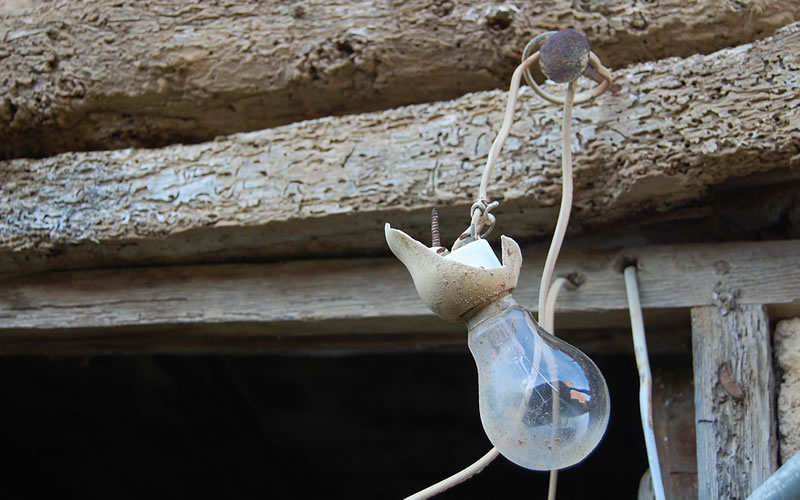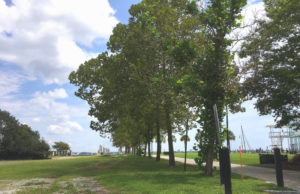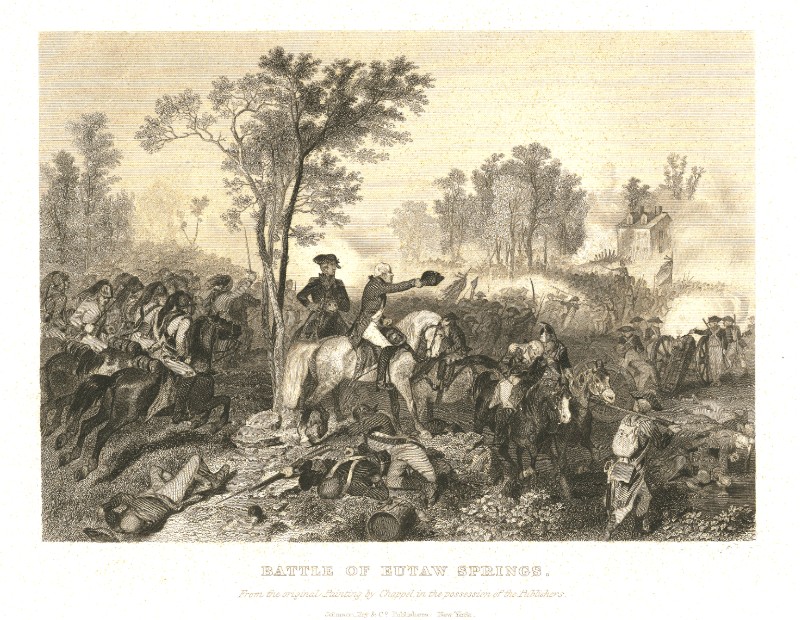INSIDE ISSUE 18.34 | AUG. 23, 2019
 BIG STORY: State revenue projections might be off by $350 million
BIG STORY: State revenue projections might be off by $350 million
NEWS BRIEFS: ‘Killer heat’ affects S.C., teachers working overtime, more
COMMENTARY, Brack: Seems like there’s one bad idea after another these days
SPOTLIGHT: S.C. Senate Democratic Caucus
MY TURN, Morris: In challenging times, a diversified portfolio can be good news
FEEDBACK: Peeking into where?
MYSTERY PHOTO: Peeking into where?
S.C. ENCYCLOPEDIA: Battle of Eutaw Springs
BIG STORY: State revenue projections might be off by $350 million

By Lindsay Street, Statehouse correspondent | Funding of pet projects at the Statehouse is coming from a surprising source: conservative revenue projections.
State lawmakers likely will get a windfall next year of up to $350 million in unforecasted, new revenues. This pool of money was not available for 2019-20 budgeting thanks to conservative revenue projections still in place since the Great Recession. As such, House budget writers predict the pot of money likely will be spent on one-time expenses instead of long-term projects.
Next week, the state’s budget prognosticators will discuss how revenue projections may be missing the mark.
“It’s a good thing on one hand, and a bad thing on the other because $350 million — everybody gets dollar signs in their eyes … and very rarely do we spend it in a way to impact serious issues in our state,” House Ways and Means First Vice Chair Gilda Cobb Hunter, D-Orangeburg, said.
Think of it as a family finding extra money at the end of the year because it underestimated its income, and deciding to put the extra money toward singular, isolated expenses like visiting the grandparents, buying a big TV or putting tires on the car. The family, however, has ongoing long-term expenses that could use those dollars — things like the retirement account or paying the babysitter.
According to Frank Rainwater, executive director of the S.C. Revenue and Fiscal Affairs Office, South Carolina’s revenue forecast has been off by 2 percent and 4 percent over the last two years, which accounted for a $177 million surplus in the 2017-2018 budget and a $350 million surplus the following year.
The extra money in 2018 was packaged into the 2019-2020 budget as nonrecurring revenue (which is only used once), and the House’s lead budget writer says he wants to do the same for 2019’s surplus in the 2020-2021 budget.
The higher than expected revenues are bringing a spotlight on how lawmakers draft their annual state spending plan. On Monday, the state’s four-member Board of Economic Advisors will convene to discuss the success of revenue projections from the 2018-2019 budget. Rainwater will make a presentation at the meeting, which begins 1:30 p.m. in room 417 of the Rembert Dennis building on the Statehouse grounds in Columbia.
‘More of an art than a science’

House Ways and Means Chair Murrell Smith, R-Sumter, billed the 2019 surplus as a “good thing.”
“It’s hard to predict the strength of our economy right now, and (the BEA is) trying their best, but they also need to do it conservatively,” he said. “(Critics) need to look back to after the Great Recession where they were constantly overestimating the revenue streams in South Carolina. We were having mid-year budget cuts … You’d much rather they underestimate rather than overestimate.”
Rainwater said his agency is still using the same, imperfect methodologies that led to deficits after the 2008 recession.
“(It) may be more of an art than a science, sometimes,” he said. He added that the forecast’s goal is to be within 1.5 percent of the actual revenues. “We rely on historical relationships between the economy and state revenues, but those are averages and they don’t necessarily play out the same every year … (and) there are no hard and fast relationships between growth and tax revenues. There’s always normal variations.”
The biggest factor leading to the 2018-2019 surplus was the “largest increase” in state revenues: $696 million, according to Rainwater. He said that was due to several “unusual events,” such as unexpected tax revenues from a $1.5 billion U.S. Mega Millions winner, two state audits that recovered $16 million, and changes that allowed the state to collect millions of dollars internet sales tax. There has also been revenue increases in “very volatile sectors,” such as corporate income with increases of $100 million in state revenue each of the last two years, Rainwater said.
The final numbers for the 2018-2019 revenues will be reported at Monday’s meeting.
Smith said he’s not eyeing any fix for improving the state’s budget forecasting. Cobb Hunter said that, if possible, forecasting dates could be adjusted to make them more timely. As it stands, the BEA releases forecasts once a quarter, and lawmakers are working off of projections that look nearly two years out.
“Part of that may not be able to change, but it’s something that should be looked at,” she said.
How to spend millions
Meanwhile lawmakers are facing a second year of deciding how to spend an unexpected windfall.
There are at least two options: spend the money in a supplemental appropriations bill (fancy talk for budgeting the money into this current fiscal year) or adding it into the non-recurring revenues for the 2020-2021 budget year. Smith and Cobb Hunter both agreed that the latter is the likely and better option.
In the 2019-2020 budget, the previous year’s $177 million revenue surplus was among the $1 billion extra the state included in its non-recurring revenue. Some of that went to a $50 per-household income tax refund and a bonus for state employees. Some of the money also went to smaller, more local projects such as millions to the South Carolina Aquarium, the Greenville Cultural and Arts Center and the Saluda River Greenway.
When announcing the 2017-2018 and 2018-2019 surpluses, Comptroller General Richard Eckstrom pushed for lawmakers to put the money toward funding state employee pensions, which stood at $25.47 billion shortfall at the end of fiscal 2018. That didn’t happen last year, and it probably won’t happen again this year.
“We already have a plan where we are increasing revenue every year for pension reform,” Smith said. “We are contributing every year more recurring revenue to reduce the unfunded liability.”
S.C. State Employees Association Executive Director Carlton Washington said the state should consider making state employee pay more market-competitive to help core functions of government have a stable staff. He said all options should be on the table, including the surplus. State employees saw some movement in their pay in the recent budget, but Washington said it hasn’t been enough to stave off instability at state offices. He called on lawmakers to enact “meaningful” changes.
Tax reform advocate Ellen Weaver of the Palmetto Promise Institute said the surplus shows the state can handle big changes — such as lowering rates and broadening the base — in revenue collections. Weaver added current budgeting practices need to be addressed.
“Our budgeting trends in South Carolina tend to mirror the cycle of the economy, when we make more, we spend more, and when we make less, we spend less, and that’s not a sustainable way to fund our budget,” she said.
Smith and Cobb Hunter urged caution for fellow lawmakers on spending the $350 million surplus in the 2020-2021 budget.
“Most economists are predicting a slow down in our economy,” Smith said. “We need to take a deep breath and see where our economy is going. We may need it for reserves.”
“I don’t think we need to take this surplus and create new spending,” Cobb Hunter said.
- Monday’s BEA meeting will not be livestreamed, but you can listen via the phone. For more information, call 803-734-2265.
- Have a comment? Send to: feedback@statehousereport.com
NEWS BRIEFS
‘Killer heat’ affects S.C., teachers working overtime, more

By Lindsay Street, Statehouse correspondent | More dangerously hot days are predicted for much of the Southeast, including South Carolina, according to a 2019 report by the Union of Concerned Scientists.
To learn more about how South Carolina and the Southeast could be affected by climate change, a webinar is being held 1 p.m. Aug. 27 by the Southeastern Alliance for Clean Energy (SACE) and the Union of Concerned Scientists. More info.
Ahead of the webinar, Statehouse Report reached out to SACE S.C. liaison Chris Carnevale of Charleston for a brief Q&A.
Q: Why does this report matter to South Carolina?
Carnevale: “The report matters because it points out that without mitigative action, global warming is expected to greatly increase the number of dangerously hot days in South Carolina, effectively lowering our quality of life, damaging our economy — particularly as days are too hot for outdoor work, and posing serious health risks to South Carolinians. The report also shows that with committed action to reduce pollution that causes global warming, the worst effects are largely avoidable.”
Q: Why should S.C. lawmakers listen in?
Carnevale: “S.C. lawmakers should listen in to learn about the increasing risk of extreme heat in our state, what the impacts of the heat are, and what can be done to avoid the worst impacts.”
Q: What is South Carolina getting right, right now, on climate change?
Carnevale: “Our economy is at an incredible point in time when the lowest cost energy sources are also the best for the environment. With the dramatic cost reductions in solar and wind energy in recent years, they now beat coal and even natural gas on price and most certainly beat them on the environmental benefits. South Carolina has made tremendous progress in recent years in beginning to capture the economic and environmental benefits of solar energy and much more progress is yet to come with the implementation of the Energy Freedom Act, passed into law this year. This momentum will serve as a solid foundation for building a 21st century energy system.”
Q: What are some examples of things being done now in other states that South Carolina should consider?
Carnevale: “South Carolina does not have a state strategy to address climate change, let alone even have work underway to gain a comprehensive understanding of what the impacts to our state are. Republican and Democratic leaders around the Southeast are taking important steps that can serve as models: Florida Republican Gov. Ron DeSantis just hired a Chief Resilience Officer for the state to prepare for the “environmental, physical and economic impacts of sea level rise” while North Carolina Democratic Gov.Roy Cooper issued an executive order committing the state to reduce climate pollution and adopting clean energy, which is resulting in an overarching state clean energy plan. It’s also critically important to understand that local governments can do a lot to address climate change, regardless of what actions the state or federal government take. For example, Columbia has committed to transitioning to 100 percent renewable energy while Charleston and Anderson have climate pollution reduction goals.”
In other news:
![]() S.C. teachers average 46 unpaid workdays per year, survey says. A survey by grassroots teacher group SCforEd says teachers are working an average of 46 unpaid days each year, with 92 percent of teachers saying they worked on weekends. According to a press release from the organization, the most common types of work that teachers reported doing on weekends were lesson planning and grading. Over the summer break, teachers reported spending time on lesson planning, cleaning and organizing their classrooms, as well as participating in professional development and training. Nearly 60 percent of teachers said they had a second job. The percent of second-job holders increases in some affluent school districts, like Anderson 2 at more than 75 percent and Lexington 2 at more than 80 percent, while several small, rural school districts like Dillon and Greenwood 52 reported 100 percent of respondents with second jobs.
S.C. teachers average 46 unpaid workdays per year, survey says. A survey by grassroots teacher group SCforEd says teachers are working an average of 46 unpaid days each year, with 92 percent of teachers saying they worked on weekends. According to a press release from the organization, the most common types of work that teachers reported doing on weekends were lesson planning and grading. Over the summer break, teachers reported spending time on lesson planning, cleaning and organizing their classrooms, as well as participating in professional development and training. Nearly 60 percent of teachers said they had a second job. The percent of second-job holders increases in some affluent school districts, like Anderson 2 at more than 75 percent and Lexington 2 at more than 80 percent, while several small, rural school districts like Dillon and Greenwood 52 reported 100 percent of respondents with second jobs.
Eleven S.C. communities use fines to makeup 10 percent of revenue. A new report by Governing, a magazine covering state and local government policies, has found that 11 South Carolina small towns see more than 10 percent of their general fund revenues coming from levying fines such as traffic tickets. One of those small towns, Jamestown in Berkeley County, gets more than 64 percent of its revenue from fines — the highest in the state. Read more.
Floodwater Commission convenes Monday. The S.C. Floodwater Commission will have its third quarter meeting with public input meeting Aug. 26 at Cheraw State Park. More info.
Updated SCVotes.org site launched. A new look will greet potential voters at the state’s Election Commission website. The commission says the site is more secure and more accessible. See it here.
High accolades for top tourism director in S.C. Duane Parrish of the S.C. Department of Parks, Recreation and Tourism has been named national State Tourism Director of the Year for 2019 by the U.S. Travel Association.
2020 candidate calendar
 Throughout the campaign season, we are working to keep South Carolina informed of candidate events in the state. Have an event you want us to know about? Email us at 2020news@statehousereport.com.
Throughout the campaign season, we are working to keep South Carolina informed of candidate events in the state. Have an event you want us to know about? Email us at 2020news@statehousereport.com.
Pence, Sanford to attend GOP barbecue. U.S. Rep. Jeff Duncan’s Faith and Freedom Barbecue in Anderson will feature a keynote speech from Vice President Mike Pence. The event is 6 p.m. Aug. 26 at the Anderson Sports & Entertainment Center. Former S.C. congressman and governor Mark Sanford, who is mulling a Republican primary challenge of President Donald Trump, will also attend. More info. Pence will also speak at 3:30 p.m. Aug. 26 at Sargent Metal Fabricators on Airport Road in Anderson. More info. The Democratic campaigns for former Vice President Joe Biden and one of his chief primary opponents California Sen. Kamala Harris will hold counter-events to Pence’s visit. More info.
Sanford heads to Iowa. Former Republican Gov. Mark Sanford will head to Iowa next week as he continues to explore his presidential bid. He will be in Des Moines, Iowa, on Aug. 28.
- Have a comment? Send to: feedback@statehousereport.com
BRACK: Seems like there’s one bad idea after another these days

By Andy Brack, editor and publisher | Bad ideas abound in government. Lots of them seem to bloom to benefit an individual or small group, not the public at large.
 That’s the case with the suggestion this week to name a building for former Democratic state Sen. Robert Ford, who resigned and pleaded guilty in 2015 to misdemeanor ethics violations linked to spending campaign money on himself.
That’s the case with the suggestion this week to name a building for former Democratic state Sen. Robert Ford, who resigned and pleaded guilty in 2015 to misdemeanor ethics violations linked to spending campaign money on himself.
State Rep. Wendell Gailliard, D-Charleston, justified the idea to name a new S.C. State University building in Charleston for Ford by reminding of the good done by Ford for years of service on Charleston City Council and in the state Senate. That, he said, outweighed anything he did that was bad.
Umm, no. Not a good idea. It doesn’t set a good example for anyone. It rewards bad behavior.
In fact, it’s just not a good idea to name state buildings or infrastructure after anyone who is serving or has served in the public trust and who is still active in business. But South Carolina, unfortunately, is as quietly addicted to the practice as opioid addicts that plague our society. Just look at all of the roads, schools and buildings named for every Tom, Dick, Harry, Susan and Gloria.
Case in point: The John N. Hardee Expressway to the Columbia Metropolitan Airport, which opened in 2004 when Hardee was on the governing board of the S.C. Department of Transportation. Hardee, you may remember, recently pleaded guilty to obstructing a federal bribery investigation. This month just one day after being sentenced to 18 months of probation and 45 days of house arrest, he was arrested on a misdemeanor charge of trying to hire a prostitute. He’s now reportedly in jail pending a decision on whether he violated his probation.
The state Transportation Commission says it will consider removing Hardee’s name from the road, just like it did about 15 years ago when it unnamed an Upstate highway honoring former Lt. Gov. and Comptroller General Earle Morris. He served time in prison for securities fraud related to a big bankruptcy after his time in public office.
Every year, dumb ideas make their presence known at the Statehouse, whether it’s continuing to underfund K-12 education or higher education or failing to accept billions in federal dollars to provide more health care to poor people. Other bad ideas for South Carolina: Selling Santee Cooper or shrinking the size of the board of the University of South Carolina – just because it might refocus criticism of lawmakers.
Yet another bad idea: The effort to allow people to carry guns openly – a red-meat proposal to satiate the Second Amendment crowd. We don’t need to take away guns from solid citizens, but openly allowing more guns on the streets in the hands of people who aren’t necessarily trained isn’t going to boost safety. (Ironically, ever wonder how California got rid of open carry for guns? Read more about the Mulford Act of 1967, which was signed by then-Gov. Ronald Reagan. It repealed an open carry law as a response to armed patrols in Oakland by Black Panthers.)
Dumb ideas abound at the federal level, too, such as a recent proposal by President Trump to buy Greenland, which the prime minister of Denmark, which owns Greenland, framed n as “absurd.” The comment infuriated Trump, who postponed a trip to Denmark.
First, it’s not a good idea to keep poking U.S. fingers in the eyes of longtime allies in Europe. We need real friends and shouldn’t make them “frenemies.” Second, the whole conversation over Greenland was nothing more than a way by the administration to spin the media away from another bad idea – a trial balloon for another tax cut to boost up the economy so it doesn’t go into a recession. And what is the root cause of that concern? Tariffs on Chinese goods, another dumb idea that’s crippling trade, hurting farmers and impacting world markets.
Bad ideas cause cycles of problems. Unfortunately, the only way you can get rid of many of them is to vote against the people who are having them.
- Andy Brack’s latest book, “We Can Do Better, South Carolina,” is now available in paperback and for Kindle via Amazon.
- Have a comment? Send to: feedback@statehousereport.com.
SPOTLIGHT: S.C. Senate Democratic Caucus
 The public spiritedness of our underwriters allows us to bring Statehouse Report to you at no cost. This week’s spotlighted underwriter is the S.C. Senate Democratic Caucus. Organized almost 25 years ago, the Caucus has played an important role in many of the historic issues facing our state. As a vibrant minority party in the Senate, its role is to represent our constituents and present viable alternatives on critical issues. The S.C. Senate Democratic Caucus remains a unique place for this to occur in our policy process.
The public spiritedness of our underwriters allows us to bring Statehouse Report to you at no cost. This week’s spotlighted underwriter is the S.C. Senate Democratic Caucus. Organized almost 25 years ago, the Caucus has played an important role in many of the historic issues facing our state. As a vibrant minority party in the Senate, its role is to represent our constituents and present viable alternatives on critical issues. The S.C. Senate Democratic Caucus remains a unique place for this to occur in our policy process.
- Learn more about the Caucus at: www.scsenatedems.org.
In challenging times, a diversified portfolio can be good news

Editor’s Note: This piece, published earlier this week by sister publication Charleston Currents, isn’t related to state policy, but it’s filled with good, old-fashioned common sense that we thought readers would appreciate in roller-coaster times.
By Kyra Morris | We can always focus on the problems. That is easy. But what if we change the focus to look for the opportunities or solutions? Then, perhaps, we’ll accomplish something worthwhile.

The markets and world events in today’s financial markets are creating a lot of uncertainties. The interest rate yield curve is inverted. Tariffs and their ultimate effect on our economy is unknown. The stock market is a roller coaster, to put it mildly. Uncertainties such as these stir up our fears, and this often leads to poor decisions. Our lives and investments are tied to the markets. What can we do to make sure that we do not fall into the trap of reacting emotionally from fear?
So we need to go back to the basics. Does the fluctuating stock market truly make a difference in your day-to-day life? If not, then let the markets do what they may, and see if you can invest as opportunities are created. If your daily life is affected, then it may be time to take a closer look at your total situation and revisit what is important. Are the concerning issues temporary? Then won’t they naturally work themselves out? Are your issues more prolonged and need more analysis? Again, begin with what is important and determine the solutions.
If there were a magic bullet for investment strategies, we’d all use it. There is not one. My firm adheres to strategies founded in academia based on creating a diversified portfolio of stocks that also has enough fixed income and reserves to allow you to feel some comfort riding through the ups and the downs of the markets. Markets will always go up and down, and business cycles will always occur.
Your investments should be based on your own goals and time frames. Do not try to outperform the markets. Sending a child to college in three years lends itself to a different model than retirement in 15 to 20 years. Your model(s) should relate directly to your plans and your goals – not what’s on the news tonight or what your neighbor’s goals are.
The U.S. market is in the midst of the longest recovery ever recorded, whereas foreign markets have lagged significantly. These differing markets do not follow each other, and there are times during which foreign markets significantly outperform our domestic market. A diversified portfolio should have foreign markets represented.
Tariffs are a troublesome question mark for investors. Tariffs do affect world trade and commerce. If we continue to use tariffs as a way to control world trade, this may create another reason to have foreign markets represented in your portfolio. Trading partners may arise outside of the U.S. These have strength within themselves. If you want to listen to an easy-to-understand podcast on tariffs that gives a history of their use and their effectiveness, go to “The Trouble With Tariffs” done by Charleston World Affairs Council member George Pope at http://www.charlestonworldaffairs.libsyn.com/ . The fixed income, or bond, portion of your portfolio may be best used as a stabilizer. There is enough volatility in the stock market. When the stock market is going up, the fixed income piece lags, but when the stock market goes down, the fixed income piece is the better performer. An example: In December 2018 when the stock markets were down 7 percent, the bond markets were up 0.5 percent to 2 percent.
Diversification means not having the same type of investments, but different investments. You want investments that represent different parts of the markets and that do not move together simultaneously. Fixed income is not directly correlated with the stock market, and is a natural diversifier. It is diversification that creates less volatility in your portfolio over time.
If your lifestyle is not altered due to swings in the stock market or if your spending and cash management are under control and if your investments are set up based on your goals and strategies, relax and adjust your focus:
Reflect on the beauty and the goodness you have around you. Take a walk with a friend. Have a romantic candlelit dinner with your loved one(s). Play and laugh with your children, grandchildren or pets. Marvel at the creative ability of the artists in your community or the world-class chefs in your restaurants. Enjoy a beautiful sunrise or sunset.
Kyra H. Morris, a Certified Financial Planner, is CEO of Morris Financial Concepts, Inc., in Mount Pleasant. A national leader in the financial planning profession, she has been named several times by leading magazines as one of the country’s top financial planners. This article first appeared in sister publication Charleston Currents.
- Have a comment? Send to: feedback@statehousereport.com.
Send us your thoughts … or rants
We love hearing from our readers and encourage you to share your opinions. But you’ve got to provide us with contact information so we can verify your letters. Letters to the editor are published weekly. We reserve the right to edit for length and clarity. Comments are limited to 250 words or less. Please include your name and contact information.
- Send your letters or comments to: feedback@statehousereport.com
Peeking into where?

James Island reader Archie Burkel, a.k.a. The Hat Lady, submitted this as a Mystery Photo and, boy, is it ever clever. Hint: It was taken in Charleston County. But what is the viewer looking at and where is it? Send your guess about the location of this photo to feedback@statehousereport.com. And don’t forget to include your name and the town in which you live.
Our previous Mystery Photo
 It was a tough one. Only one reader — the indefatigable George Graf of Palmyra, Va. — correctly identified the Aug. 16 “big field” mystery as the piece of land on the Charleston peninsula where the International African American Museum will be built. At the right, you can see a slice of the Charleston Maritime Center. The angle of the shot obscures the USS Yorktown, which is across the river. You can, however, see some sailboat masts. Congrats, George!
It was a tough one. Only one reader — the indefatigable George Graf of Palmyra, Va. — correctly identified the Aug. 16 “big field” mystery as the piece of land on the Charleston peninsula where the International African American Museum will be built. At the right, you can see a slice of the Charleston Maritime Center. The angle of the shot obscures the USS Yorktown, which is across the river. You can, however, see some sailboat masts. Congrats, George!
Graf shared the significance of the land, according to greenvilleonline.com: “This serene site was once the epicenter of America’s ugliest enterprise. Nearly 250 years ago, this area was merely brackish marsh. Charleston merchant Christopher Gadsden converted it into the largest wharf in North America. It covered 840 feet from the Charleston Harbor to East Bay Street, between what are now Calhoun and Laurens Streets.
“Initially, Gadsden’s Wharf primarily serviced the rice industry. Eventually, it became a hub of the international slave trade. From 1783 to 1808, approximately 100,000 enslaved African men, women and children were forced into ships and carried on a voyage through darkness across the Atlantic Ocean into the Charleston Harbor.
“According to historian and former South Carolina Historical Society archivist Nic Butler, on Feb. 17, 1806, the City Council of Charleston passed an ordinance stipulating that all vessels importing enslaved Africans port in Gadsden’s Wharf. Enslaved Africans were stored like crops in a wharf warehouse. Shackled to despair, hundreds of men, women and children died from fevers or frostbite. They were buried unceremoniously in a nearby mass grave. Those who survived those subhuman conditions were advertised in newspapers, sold and dispersed.”
- Send us a mystery: If you have a photo that you believe will stump readers, send it along (but make sure to tell us what it is because it may stump us too!) Send to: feedback@statehousereport.com and mark it as a photo submission. Thanks.
S.C. ENCYCLOPEDIA
HISTORY: Battle of Eutaw Springs

S.C. Encyclopedia | The Battle of Eutaw Springs was the last major engagement in South Carolina between American and British forces during the Revolutionary War. In the bloody encounter, some two thousand Continental and militia soldiers commanded by General Nathanael Greene clashed with 2,300 British regulars and Loyalists under Lieutenant Colonel Alexander Stewart. Although Greene was forced to leave the field, the British were equally mauled and retreated to Charleston, abandoning the South Carolina upcountry. The battle site is located in Orangeburg County near Eutawville, and a portion of the battlefield is a state historic site.
British forces were at Eutaw Springs on September 7, encamped near a sturdy two-story brick home with palisaded garden, when Greene completed the consolidation of his forces at Burdell’s plantation about seven miles away. Early the following morning, Greene put his army on the march. Stewart was not aware that the Americans were so close, and he had that morning sent out foragers to collect sweet potatoes. Four miles from Eutaw Springs, the vanguard of the American army ran into the British escort protecting the rooting party. Many of the unarmed foragers were captured. Reacting quickly, Stewart sent forward additional troops to delay the Americans and formed his main army in a single line about two hundred yards west of his Eutaw Springs campgrounds. He anchored his right flank on Eutaw Creek with the brick house, occupied by a covering force, behind the line.
Greene used a formation that had seen success at the Battle of Cowpens. The militiamen were placed in the front line, with the battle-hardened Continentals behind them in the second line. Advancing, the Americans pushed back the British skirmishers until they met the main body, at which point there began a bloody back-and-forth duel. Eventually the center of the American line began to buckle under the intense action, and Stewart directed an advance. But his forces became disorderly and Greene saw his opportunity. He ordered the Continentals forward in a bayonet attack that forced the British left flank to fall back and retreat through their campsite. On the verge of a major victory, many of the American troops thought the battle won and left the fighting to loot the British camp.
This action cost Greene his victory, for the British right flank had not retreated and those secure in the house began a heavy fire, which threw the Americans into confusion and allowed Stewart to rally his troops for a counterattack. Greene got control of his troops before disaster struck, and behind a covering force they retreated back to Burdell’s, leaving the field and two artillery pieces to the British. Losses on both sides were high: the British admitted to 683 killed, wounded, and missing; and the Americans reported 517. Among the American unit commanders were many notable patriots, including Francis Marion; Otho Williams; William Washington, who was captured; Henry Lee; Andrew Pickens, who was wounded; and Wade Hampton.
— Excerpted from an entry by Stephen D. Smith. This entry may not have been updated since 2006. To read m0re about this or 2,000 other entries about South Carolina, check out The South Carolina Encyclopedia, published in 2006 by USC Press. (Information used by permission.)
ABOUT STATEHOUSE REPORT
Statehouse Report, founded in 2001 as a weekly legislative forecast that informs readers about what is going to happen in South Carolina politics and policy, is provided to you at no charge every Friday.
Meet our team
- Editor and publisher: Andy Brack, 843.670.3996
- Statehouse correspondent: Lindsay Street
Buy the book
 Now you can get a copy of editor and publisher Andy Brack’s We Can Do Better, South Carolina! ($14.99) as a paperback or as a Kindle book ($7.99). . The book of essays offers incisive commentaries by editor and publisher Andy Brack on the American South, the common good, vexing problems for the Palmetto State and interesting South Carolina leaders.
Now you can get a copy of editor and publisher Andy Brack’s We Can Do Better, South Carolina! ($14.99) as a paperback or as a Kindle book ($7.99). . The book of essays offers incisive commentaries by editor and publisher Andy Brack on the American South, the common good, vexing problems for the Palmetto State and interesting South Carolina leaders.
More
- Mailing address: Send inquiries by mail to: P.O. Box 22261, Charleston, SC 29407
- Subscriptions are free: Click to subscribe.
- We hope you’ll keep receiving the great news and information from Statehouse Report, but if you need to unsubscribe, go to the bottom of the weekly email issue and follow the instructions.
- © 2019, Statehouse Report. All rights reserved.















